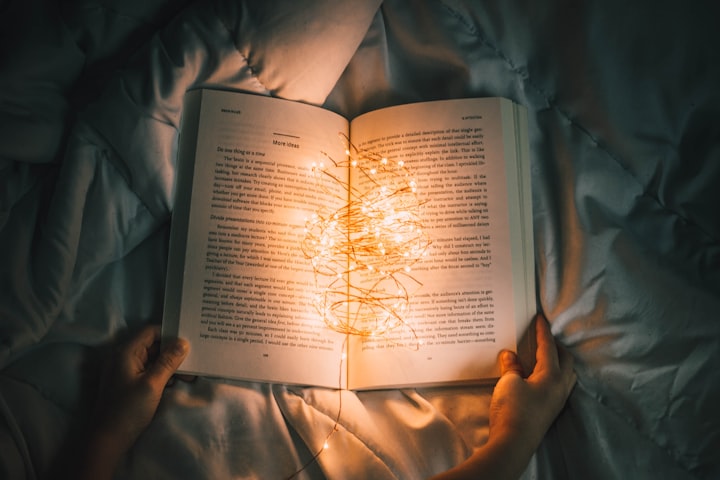"The heepies lived here." My Russian landowner stopped to ensure I comprehended.
"What? Gracious, the hipsters."
"Indeed, the heepies. Insane tones on everything when we purchased this. Hallucinogenic. My siblings and my dad and I needed to paint everything."
The Russians had worked effectively of returning the San Francisco Victorian to its unique polish. Three-stories high, the Haight Street apartment complex opened to perspectives on Buena Vista Park on the north. The perspectives from the south, where my lounge area inlet window was, watched out over the city, Golden Gate Park, and on toward the Golden Gate Bridge. Haze horns sounded, a solace during the evening.
My property manager's twin sibling additionally lived on the highest level with a secondary school amigo. Another sibling lived on the second floor with his better half, a histologist. Brought into the world in China, the family escaped to Brazil where they got an adoration for samba prior to joining San Francisco's vigorous Russian people group. Diligent employees, dealing with the high rise was their subsequent work. We turned out to be old buddies.
Wikimedia Commons.
It was 1978 when I moved to Haight Street, a little more than 10 years after the Summer of Love overwhelmed the neighborhood with youngsters. The rural children in ethnic and Native American-affected radical outfits had continued on or transformed into the vagabonds currently prowling before the hand clothing and the Free Clinic. My condo mate, Charlie, and I dressed down when we went out into the Haight trying to limit their bugging. We were the two assistants at a close by medical clinic and possessed little energy for road talk about the ashram, Zen, the zodiac, and such. Charlie kept an Army overflow coat to wear as road disguise. I did not have a normal mask.
One morning I chose to shop following a night accessible as needs be instead of hit the hay. I figured I looked notorious enough to evade the bums. Still in my cleans, my hair unwashed, my look foggy, I strolled a few squares to the staple. I put my couple of things on the transport line and the representative totted them up. I rounded out the Wells Fargo check, the checks I had — for the first and last time — embellished with an "M.D." after my name. The agent took a gander at the check, looked me over, glanced back at the check.
"You positively stay under the radar, don't you?"
Other than the homeless people, one of the leftovers from the Haight Street of the 1960s is the exemplary hipster splash-color. I had hobnobbed with the splash-color frenzy before I moved to San Francisco.
In the mid 1970s, I lived in another highest level loft, in Montreal while I learned at McGill. My fourth-floor stroll up was in a block blocky design worked as apartment lodging during the 1920s. This was my first experience living in a city and there was a lot of I didn't comprehend. All that I thought about apartments came from Bettie Boop kid's shows and other such wellsprings of astuteness. Right away, I thought I lived in a ghetto as the trash bin was on the emergency exit and I had a rope garments line interfacing my condo with the following lodging block. I mistook taxis for squad cars. (In Ohio we possibly had a sheriff and — in case we were fortunate — saw little of him.) The loft was in the Snowdon area, home of Montreal's most seasoned temple and a dominatingly Orthodox Jewish region. Groups of unshaven Hasidic men would walk down the walkway, high-delegated dark caps on their heads, long dark rekel coats surging. Their little children ran in front of them, earlocks waving. Shops were shut on Friday for the Sabbath and open on Sundays.
Two older sisters lived in the loft close to mine. I saw them about one time each year, yet day by day I heard their tea pot whistle and the planks of flooring squeak as they strolled up the passage to turn it off. Across the lobby, two ladies lived in one loft and four youngsters in the other. Craftsmans, the men made their living selling high quality things in the city of Montreal. Billy shot copper with a self-altered blow light to "fire paint" rainbow tones on adornments and stylistic theme. His work was creative. Billy was juried into the Smithsonian's specialty show and was dispatched to make a beautifying divider for a Canadian bank. Mel did silverwork.
The other two, Jason and Mark, made splash-color craftsmanship. They purchased electrical discharges in the article of clothing region, creatively colored it with dye, and outlined the outcomes as huge craftsmanships. Vacationers, regular Montrealers, and entrepreneurs gobbled it up. Incredibly, the pair pulled in $20,000 (Canadian) a year — what could be compared to $99,783.65 in the present US dollars. The cash was all that anyone could need to keep them in their #1 food — bagels from the shop across the road, spread with raspberry jam.
The two weren't the only ones bringing in cash in the mid '70s from what started as an unassuming texture treatment.
Peruvian tunic, 750–950 AD. Wikimedia Commons
Tie coloring relies upon an oppose — something is done briefly to make explicit spaces of a texture impervious to color. For millennia all over the globe texture dyers have sorted out approaches to utilize this plan to make designs on completed fabric. Wax fills in as the oppose in Indonesian batik. The wax coats part of the texture, which is then colored lastly, the wax is eliminated. Japanese shimbori, regularly finished with the normal blue color indigo, utilizes a few strategies as stands up to. Texture may be collapsed, bundled, put under blocks, curved, tied, or sewn before the color is applied. West African splash-color method utilizes string or little segments of grass to tie material before it is colored. Pre-Columbian Peruvians splash-colored complex examples as right on time as 500 A.D.
Shibori texture, by Hiroshige. WIkimedia Commons.
Americans thought about splash-color strategy for quite a long time before the Summer of Love. A Columbia teacher exhibited it in 1909. During the 1920s, creatively coloring procedure was instructed as a specialty to younger students. However, with the ascent of nonconformists during the 1960s, tie coloring turned into an extremely durable power in design.
Outfit planner Emile Stoner, "Mississippi Rainbow Voodoo Woman," Federal Theater Project, 1938. Library of Congress.
Many credit Ann Thomas, "Splash-color Annie," a craftsman in the Haight Ashbury region for setting off the frenzy during the 1960s. Tie coloring is a cheap, handily scholarly approach to carry the purported hallucinogenic look to texture and garments (counting utilized, old, or vintage finds). Connect coloring fit right to the time's relationship with hand makes.
Around this equivalent time, RIT, an American organization which made color for home use, saw a decrease sought after. RIT employed advertiser Don Price who worked "for certain imaginative sorts" in Greenwich Village. They suggested improvement of a fluid color which would be more handily utilized than the earlier powder. Wear Price subsidized specialists to make a few hundred splash-colored tee shirts to sell at the Woodstock celebration. He likewise tested the craftsman couple Will and Eileen Richardson to concoct new uses for RIT color. The Richardsons showed themselves tie coloring in four days, then, at that point went on to establish the Up Tied material house. Up Tied advanced creatively colored extravagance textures like silk and chiffon and truly took off with a $5000 request from architect Halston. By 1970 model Marisa Berenson was presenting in a creatively colored silk caftan by Halston in Vogue magazine and the Richardsons won a Coty grant. Along these lines, while the radicals and Rock and Roll stars out in California were tie coloring second hand store pants, East Coast design experts were wearing splash-colored hide, silk, and velvet.
Creatively coloring never disappeared. It is firmly attached to recollections of Janis Joplin, Jerry Garcia and the Grateful Dead, and Woodstock. John Sebastian, instructed by Tie-Dye Annie, splash-colored all his own attire. His splash-colored cape is cherished at Cleveland's Rock and Roll Hall of Fame. Vogue routinely exhibits creatively colored attire in its distributions. Paparazzi photo big names from Kanye West to Felicity Huggins in creatively colored outfits.
For those longing to remember the 1970s, the current Netflix miniseries Halston incorporates one of his now-vintage creatively colored silk caftans.
Hardly any specialties give as much value for the money, please as wide an age reach, and offer the adaptability of tie-coloring material. In the event that you'd prefer to have an attempt, you can discover packs of color on the web or in specialty and interest shops. Add a minimal expense three-pack of cotton undershirts and you're good to go. Or on the other hand go even lower cost and use dye on an old pair of pants or other garment. With tie coloring, whatever you do, you can't turn out badly.






Comments
There are no comments for this story
Be the first to respond and start the conversation.